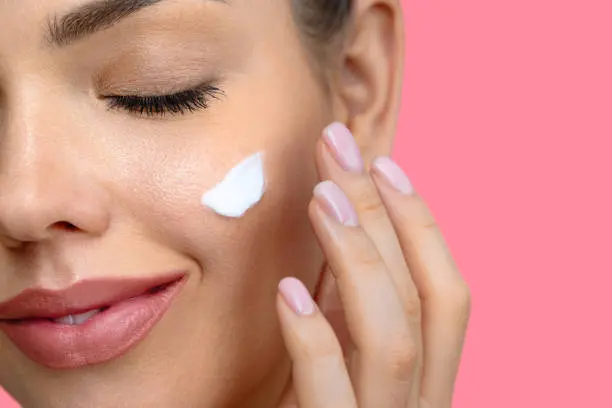Proper makeup removal is essential for maintaining healthy skin and preventing clogged pores. Post-makeup skincare helps reduce wrinkles and dark spots, and preserves a radiant complexion.
Choosing the right method depends on your skin type and its specific needs to achieve effective results.
The Importance of Cleansing After Makeup

The correct makeup removal method allows the skin to breathe and regenerate because it:
- Prevents the accumulation of dirt and oil.
- Reduces the appearance of pimples and blemishes.
- Maintains smoothness and radiance.
Choosing the Right Makeup Remover
Using the appropriate makeup remover ensures greater effectiveness and protects the skin. Therefore:
- For sensitive skin, use fragrance-free and alcohol-free products.
- For oily skin, opt for oil-free gel or water-based removers.
- For dry skin, use cream or oil-based removers to moisturize the skin during cleansing.
Gently Removing Eye Makeup
Removing eye makeup requires special care to avoid sensitivity and irritation. Therefore:
- Use a makeup remover specifically formulated for the eyes.
- Apply a suitable amount to a cotton pad and press it against your eye for a few seconds before wiping.
- Avoid rubbing too vigorously to prevent wrinkles and dark circles.
Cleansing Your Face According to Your Skin Type
The method for removing makeup varies depending on your skin type to ensure proper cleansing:
- Oily Skin: Use a gentle cleanser to reduce excess oil.
- Dry Skin: Choose a cream or oil cleanser that maintains moisture.
- Combination Skin: Use a mild cleanser depending on whether the area is dry or oily.
Using Makeup Remover Wipes with Caution
Removing makeup with makeup remover wipes is convenient for travel or emergencies, but it's not sufficient for daily use because:
- They can leave makeup residue on the skin.
- Choosing alcohol- and fragrance-free wipes is best for sensitive skin.
- You should wash your face after using them.
Gentle Exfoliation After Makeup Removal
Incorporating exfoliation into your makeup removal routine helps remove dead skin cells and enhances skin radiance. Therefore:
- Use a gentle exfoliator once or twice a week, depending on your skin type.
- Avoid harsh exfoliators that can cause irritation.
- After exfoliating, apply a moisturizer to replenish hydration.
Moisturizing After Makeup Removal

Proper makeup removal includes moisturizing to maintain the skin's barrier:
- For dry skin, use a cream rich in nourishing oils.
- For oily skin, choose a light cream or moisturizing gel.
- For sensitive skin, use a gentle, non-irritating moisturizer.
Frequently Asked Questions about Makeup Removal
Can I sleep without removing my makeup?
No, it's not recommended. Sleeping with makeup on can clog pores and cause breakouts.
How often should I remove my makeup daily?
Once before bed. It's best not to apply makeup more than once a day.
Can I remove makeup with just water?
No, water alone isn't enough. Your skin needs products specifically designed for complete makeup removal.
Can I use natural oils to remove makeup?
Yes, such as coconut oil or olive oil, but you'll need to rinse thoroughly afterward.
Article Summary
Removing makeup correctly requires choosing products suitable for your skin type and using the right techniques. The process begins with a gentle makeup remover, followed by thorough cleansing of the face and eyes.
and moisturizing to restore the skin's balance. Following these steps maintains healthy skin, prevents breakouts and wrinkles, and ensures a natural glowand lasting radianc.